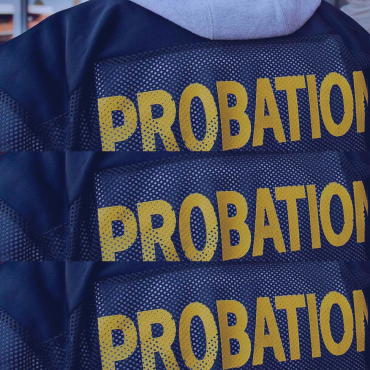Service
Community safety
The sustainable development of countries is intrinsically linked to the successful implementation of crime prevention strategies, which, in turn, promote community safety.
The concept of community safety refers to the broader range of issues that must be tackled to promote safer cities and communities with outcomes that bring benefits beyond an absence of crime, namely the reduction of the costs with criminal justice systems and also de decrease of social nature costs.
Effective and assertive crime prevention policies and implementations enhance the citizens’ quality of life. Community safety and crime prevention, being intertwined, ideally require multidisciplinary and multi-agency interventions, as well as early childhood intervention, educational and employment support, drug treatment or urban renewal.
The use of a strategic approach that enables policymakers and practitioners to tailor interventions to problems is of utmost importance.
At IPS, we assist the selection and deployment of a wide range of interventions aimed at attaining and/or improving crime prevention and community safety, finding a balance between short-term and longer-term outcomes, as well as protecting human rights.
- Probation
- Restorative justice
- Community involvement
- Community oriented policing
- Predictive policing
- Gangs
- Radicalisation prevention
The setting-up of new probation frameworks or their reform require full attention to their complexity and particular characteristics
Probation plays an important role in helping to reduce the level of crime and in increasing public safety. These advantages are attained by working with offenders to help change their behaviour and make good the harm done by crime.
However, the reasons for introduce probation into legislation differ both geographically and culturally. It may consist in a means to develop alternatives to incarceration, to achieve cheaper sentencing options or to enhance the human rights dimension.
Therefore, being a set of mechanisms and strategies to solve the local problems of the criminal justice system, probation systems are complex; this is partly why probation services can be so different, depending on the jurisdiction.
We enable the setting up of new probation services or their reform through the:
- Assessment of the legal and institutional framework;
- Assessment of judicial and legal culture;
- Design and negotiation of the probation concept;
- Design of the procedures and the corresponding legislation;
- Piloting of the new probation concept.

Restorative justice involves the victim, the offender, their social networks, justice agencies and the community
The goal: repair the harm caused by crime.
Restorative justice is seen as a broad approach to problem-solving. The active participation of the parties is a core element of the process that emphasizes relationship building, reconciliation and the development of agreements around a desired outcome between victims and offender.
Restorative justice approaches are also seen as means to promote the peaceful expression of conflict, encourage tolerance and inclusiveness, build respect for diversity and boost responsible community practices.
Restorative justice programmes cross fields as diverse as justice (policing, corrections, juvenile justice), schools, workplaces, organizations, faith groups, family and community.
In the justice field, restorative justice practices can be used to reduce the burden on the criminal justice system, to divert cases out of the system and to provide the system with a range of constructive sanctions. Restorative justice programmes include victim offender mediation programmes, community and family group conferencing, circle sentencing and reparative probation.
Restorative justice programmes complement the existing criminal justice system. There are four main points within the criminal justice system at which a restorative justice process can be successfully initiated:
- At the police level (pre-charge);
- Prosecution level (post-charge but usually before a trial),
- At the court level (either at the pre-trial or sentencing stages);
- Corrections (as an alternative to incarceration, as part of or in addition to, a non-custodial sentence, during incarceration, or upon release from prison).
At IPS, we support the development and implementation of restorative justice programmes at any of these stages.

Innovation in prison and probation systems is generated through the integration of external services and the cooperation with civil society
The involvement of NGO’s, schools and other stakeholders supporting prison activities and offenders’ social reintegration is crucial.
Capacity building of both NGO’s and prison staff, aiming at the development or integration of different interventions, is at the forefront, as far as innovation in correctional services is concerned.
Award-winning practices in the field of community involvement include the following projects:
- One day in prison – working with schools and teachers in reducing potential criminal behaviour of youngsters;
- Volunteers management programme – structuring volunteer activity around inmates and prison systems needs;
- Social enterprising programme – development of social economy initiatives involving offenders or ex-offenders.

Community-oriented policing is an approach that promotes organizational strategies to address public safety issues
This kind of policing manages the causes and it is aimed at reducing the fear of crime and social disorder especially by making use of partnerships between the community and law enforcement authorities. As it underscores crime prevention, community-oriented policing represents a fundamental shift from the traditional, reactive, policing.
It recognizes that police can seldom solve problems alone and encourages interactive partnerships with relevant stakeholders such as governmental agencies, businesses, nonprofits, community members, and the media. These partnerships should be used to accomplish the development of solutions through collaborative problem solving and improving public trust.
Community-policing strategies have a positive effect on citizen satisfaction and trust in law enforcement agents, as well as in the reduction of perception of disorderly conduct.
At IPS, we create procedures to be implemented throughout all the core components of community-oriented policing including partnering with the community, problem solving, transforming policing agencies to support and empower front-line officers, decentralize command and encourage innovative problem solving.

Predictive policing helps organize policing as an information business in the information age
Predictive policing is within the framework of the quest to anticipate and prevent crime. It entails taking data from different kinds of sources so that its analysis’ outputs are used to foresee, prevent and act upon crime, in a more effective way.
Action, instead of reaction, is the watchword when we talk about predictive policing, as law enforcement leaves the past events behind to focus on what will happen and how to deploy resources in front of criminal activity.
Predictive policing borrows from the principles of evidence-based policing, problem-oriented policing, community policing, and other proven policing techniques.
Our services under the purview of these axes aim at outlining crime patterns and trends.

Harnessing local authorities and community organisation’s knowledge and increasing their capacity to act in gang environments is the best way to address this rising issue
It is widely recognized that street gangs are generally connected with violent and deviant behaviour. Aggressive youngsters are at greater risk of joining collectivities that we call street gangs or troublesome youth groups.
Nowadays, many countries have to deal with such groups, which may be called gangs, although researchers and policy makers often hesitate to call them this, because they compare their own groups to American stereotypes.
In this regard, we have the know-how and means to put forward a work plan to develop tools, materials and a training methodology that identify competences needed for engaging within local communities affected by gang activity, to harness their local knowledge and meaningfully increase their understanding and capacity to act in gang environments.

Working together with local authorities and law enforcement agencies to better understand, prevent and address violent radicalisation
Preventing violent radicalisation in cities entails the cooperation of entities and organizations in the field of urban security and expertise of national structures to fight terrorism (partners from different countries involving government and law enforcement agencies, municipalities, research institutions and private organizations).
At IPS, we can support radicalisation prevention efforts through designing and implementing:
- Prevention and education tools that will build on the implementation of concrete actions to structure against speech and human alliances against violent radicalisation;
- Evaluation of reporting procedures, identification, and treatment of people who have become radicalised, by the comparative analysis of the procedures implemented in the enforcement agencies;
- Technological tools to promote the protection of youth and attempts of indoctrination, encouraging characterization of sources and resources of hate speech and radicalisation;
- Evaluation and innovation in urban policy radicalisation prevention by proposing new experiments, dissemination of good practices and promoting the mapping of skills of local players’ prevention and treatment of radicalisation.

